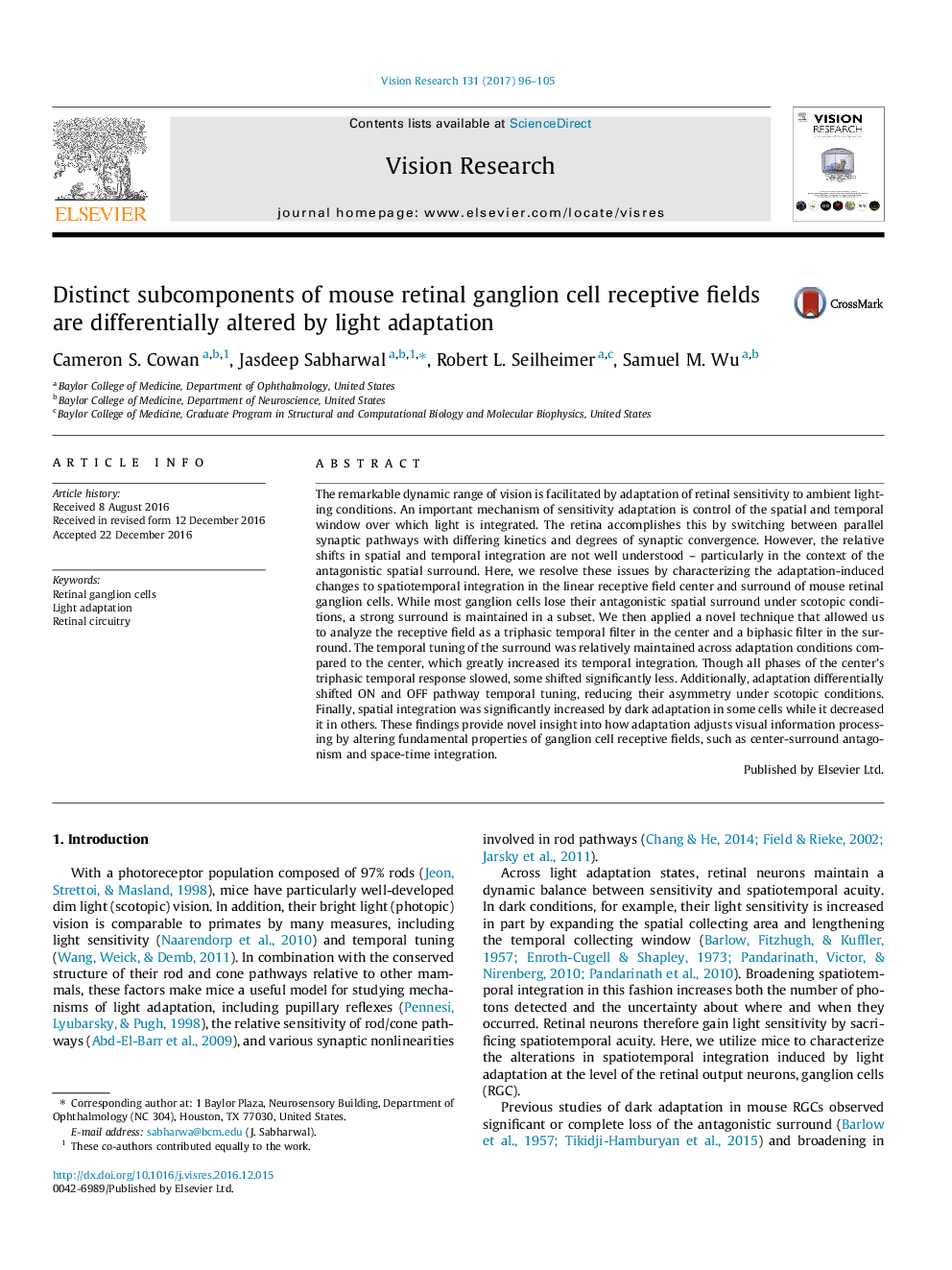| Article ID | Journal | Published Year | Pages | File Type |
|---|---|---|---|---|
| 5705948 | Vision Research | 2017 | 10 Pages |
Abstract
The remarkable dynamic range of vision is facilitated by adaptation of retinal sensitivity to ambient lighting conditions. An important mechanism of sensitivity adaptation is control of the spatial and temporal window over which light is integrated. The retina accomplishes this by switching between parallel synaptic pathways with differing kinetics and degrees of synaptic convergence. However, the relative shifts in spatial and temporal integration are not well understood - particularly in the context of the antagonistic spatial surround. Here, we resolve these issues by characterizing the adaptation-induced changes to spatiotemporal integration in the linear receptive field center and surround of mouse retinal ganglion cells. While most ganglion cells lose their antagonistic spatial surround under scotopic conditions, a strong surround is maintained in a subset. We then applied a novel technique that allowed us to analyze the receptive field as a triphasic temporal filter in the center and a biphasic filter in the surround. The temporal tuning of the surround was relatively maintained across adaptation conditions compared to the center, which greatly increased its temporal integration. Though all phases of the center's triphasic temporal response slowed, some shifted significantly less. Additionally, adaptation differentially shifted ON and OFF pathway temporal tuning, reducing their asymmetry under scotopic conditions. Finally, spatial integration was significantly increased by dark adaptation in some cells while it decreased it in others. These findings provide novel insight into how adaptation adjusts visual information processing by altering fundamental properties of ganglion cell receptive fields, such as center-surround antagonism and space-time integration.
Related Topics
Life Sciences
Neuroscience
Sensory Systems
Authors
Cameron S. Cowan, Jasdeep Sabharwal, Robert L. Seilheimer, Samuel M. Wu,
